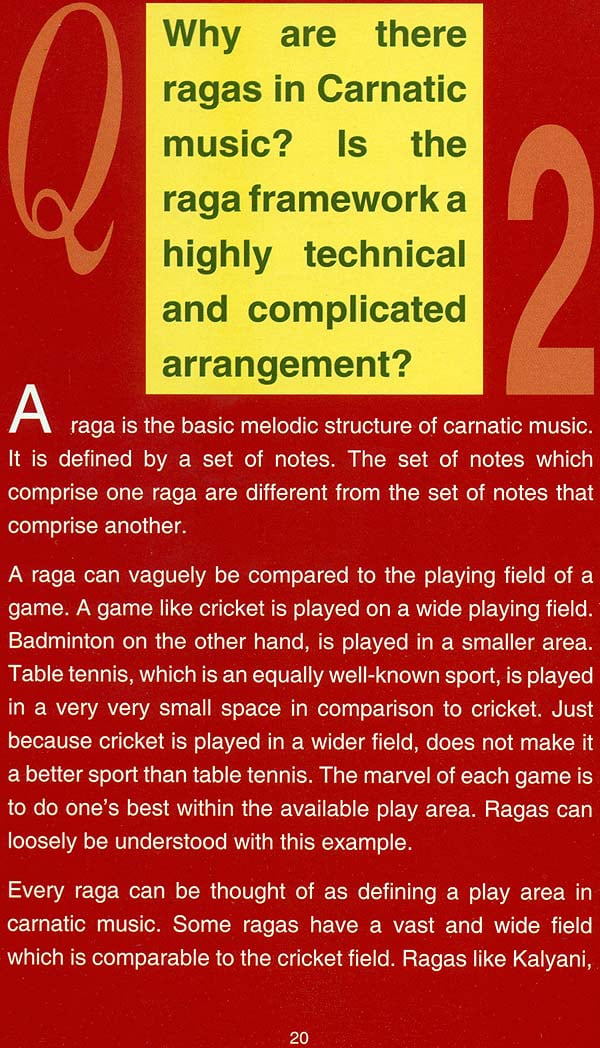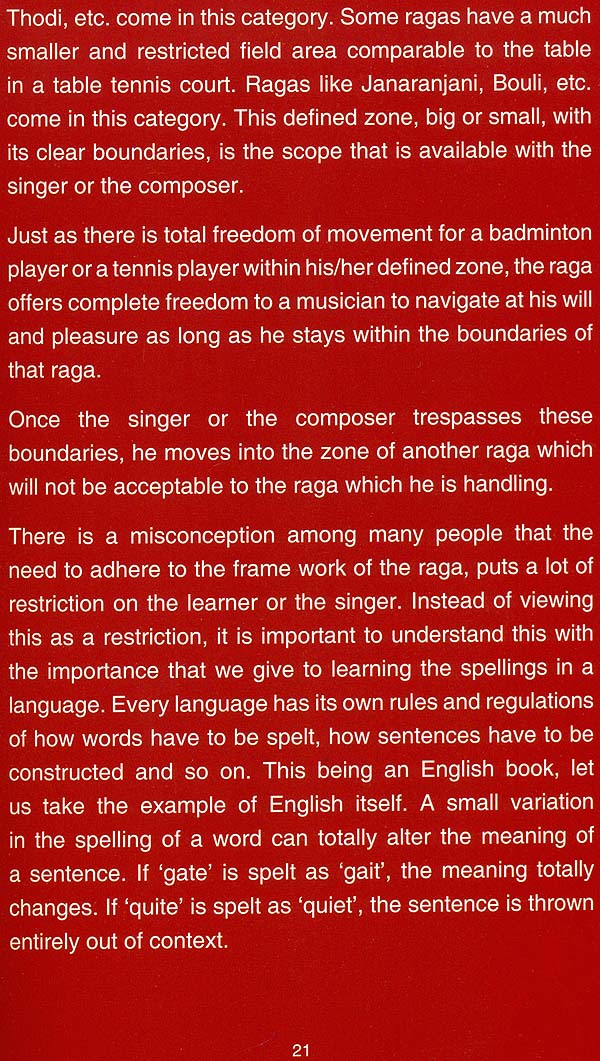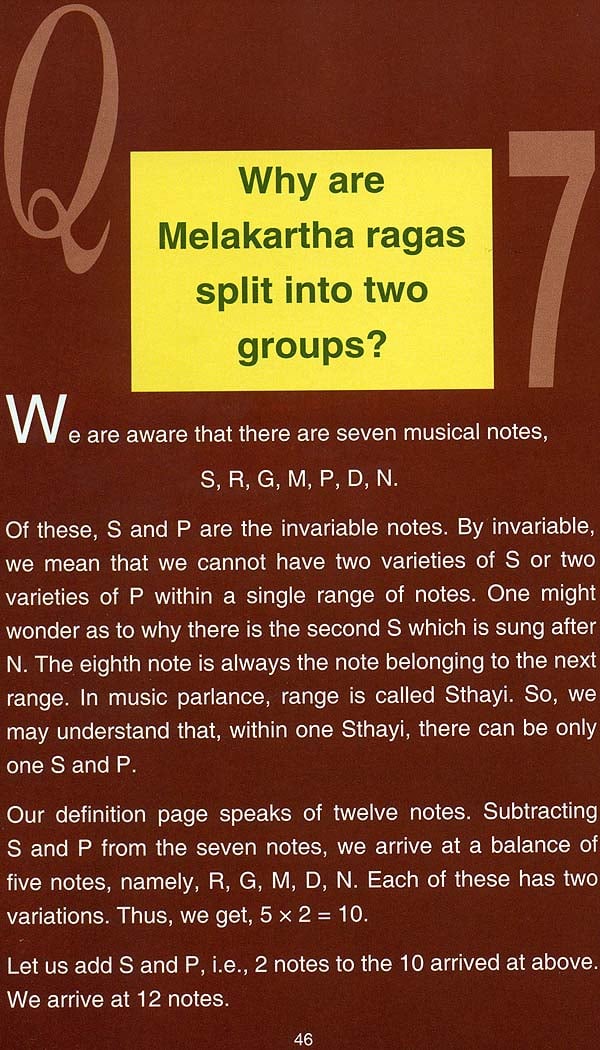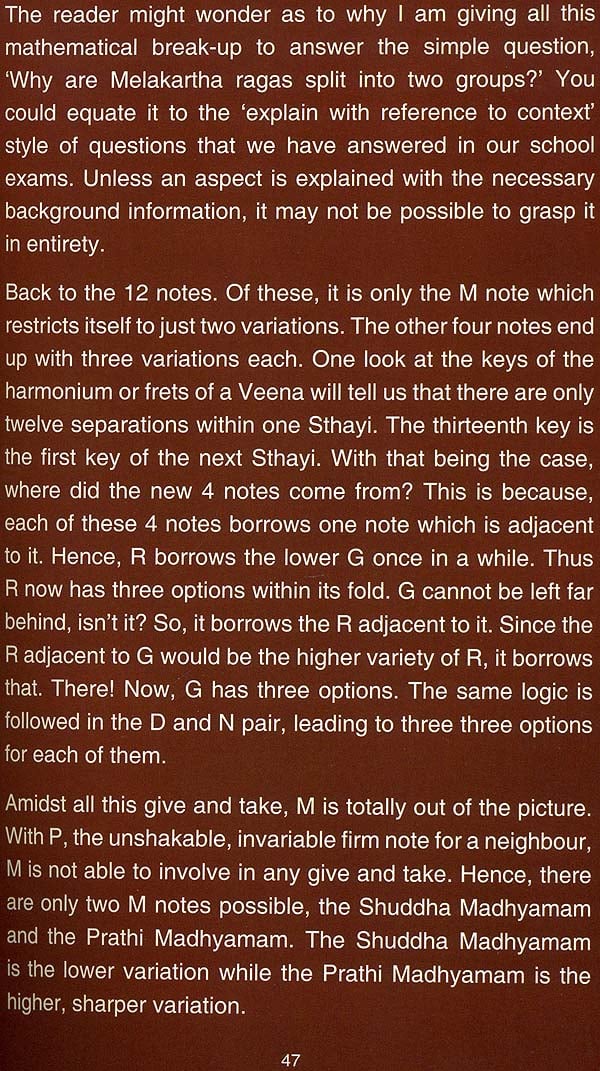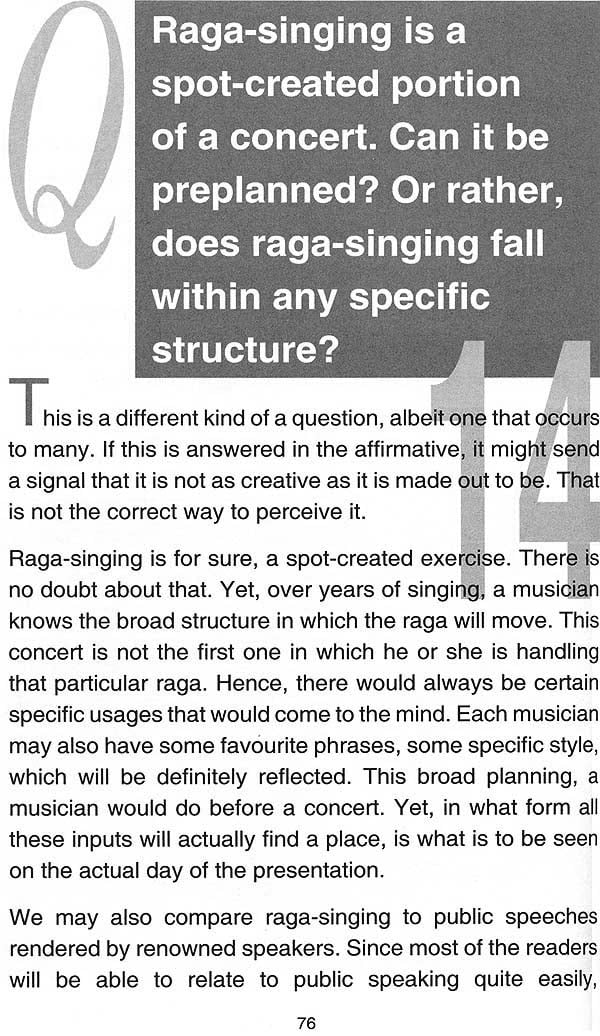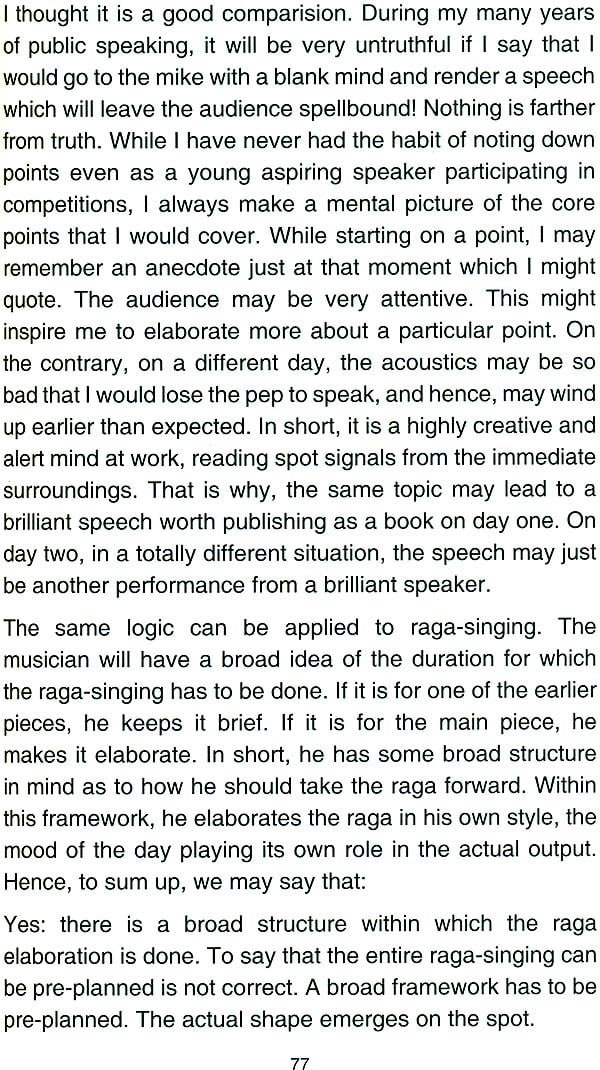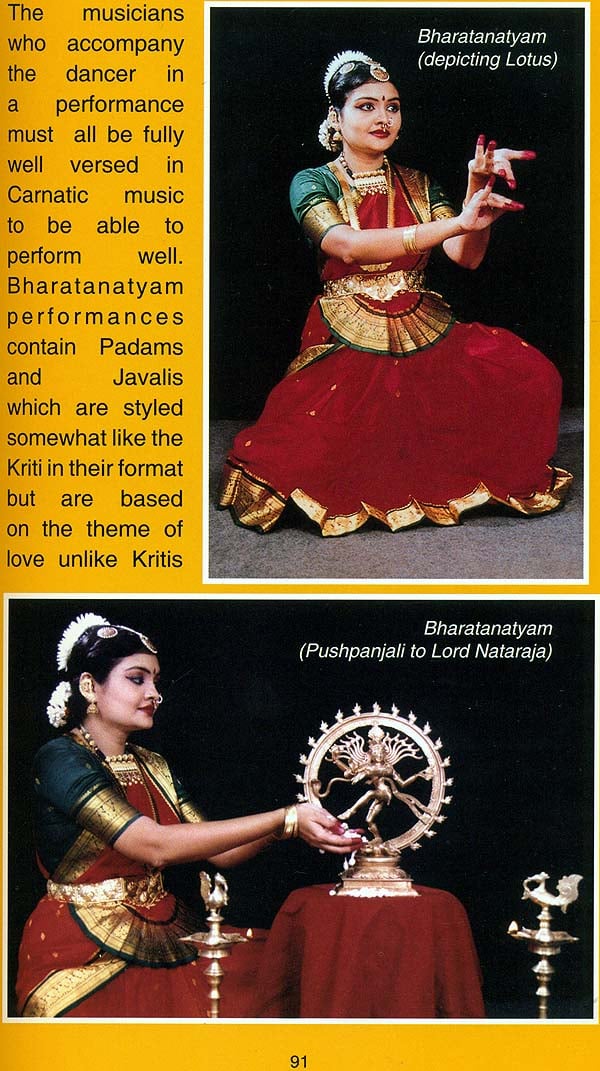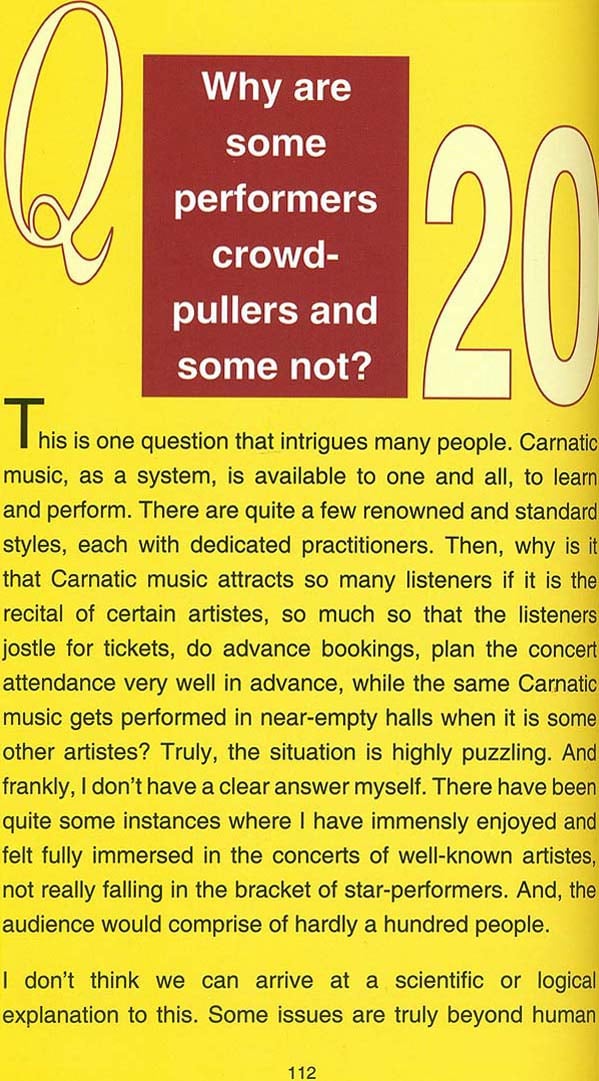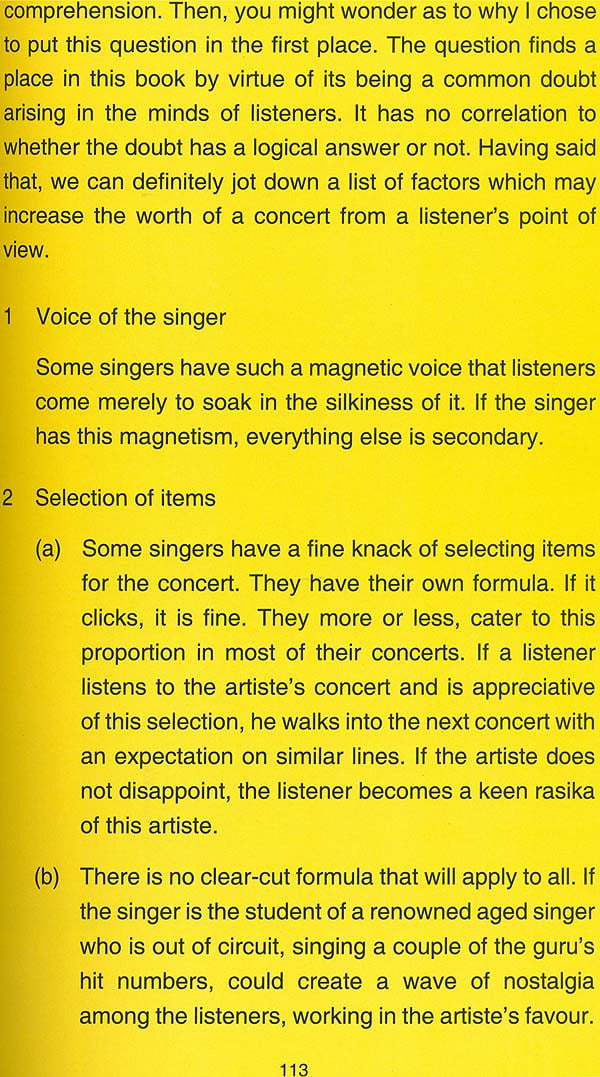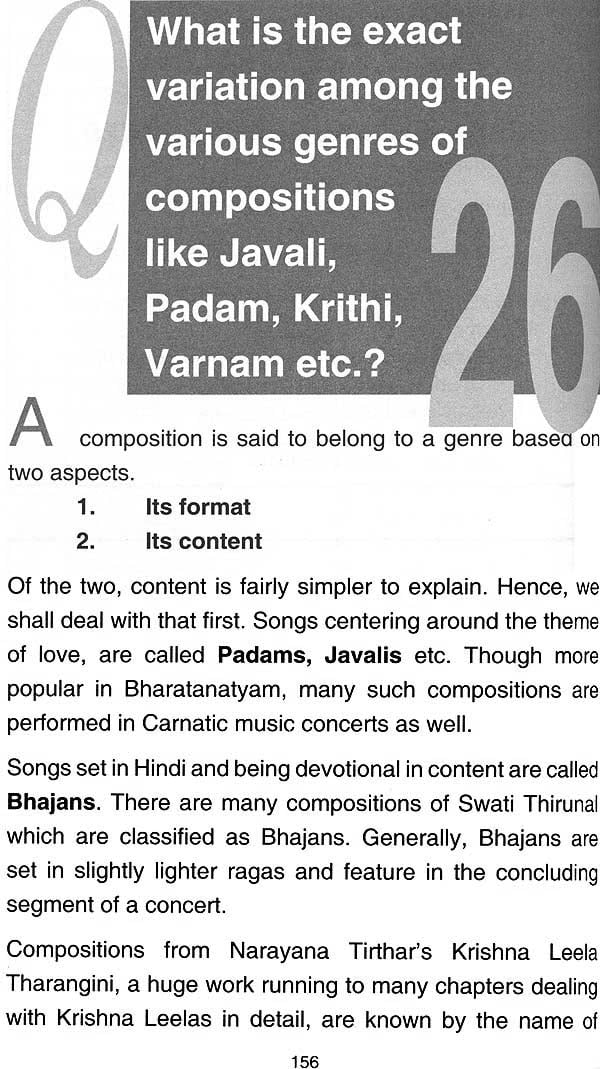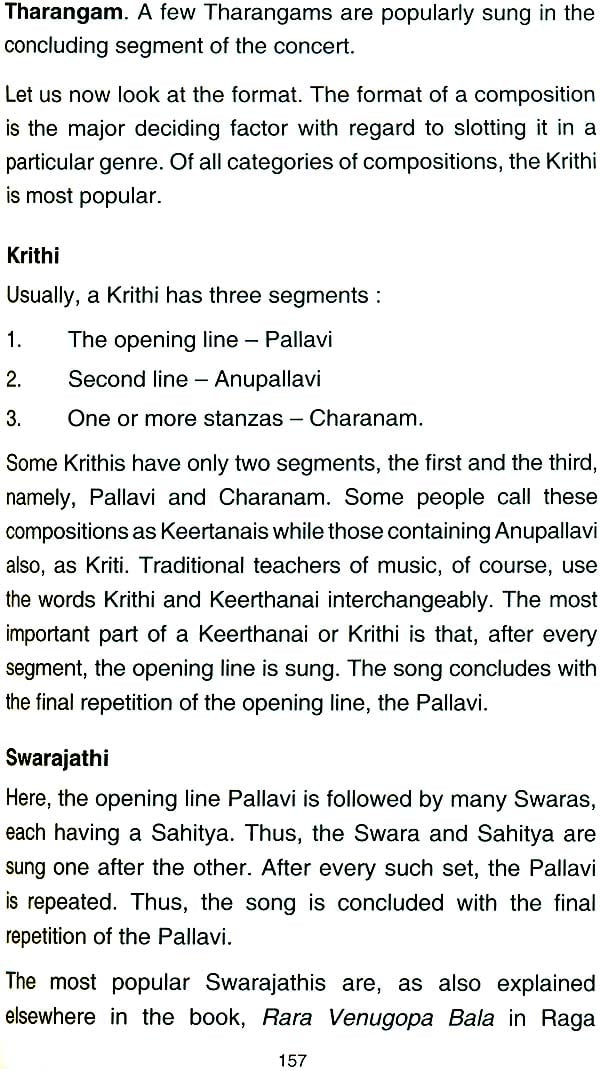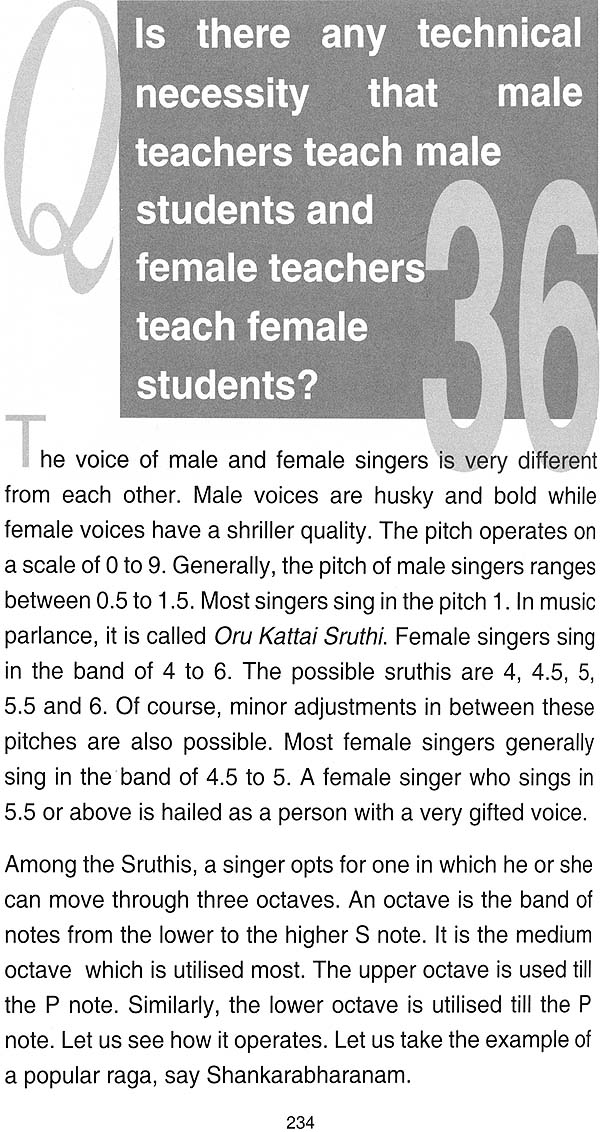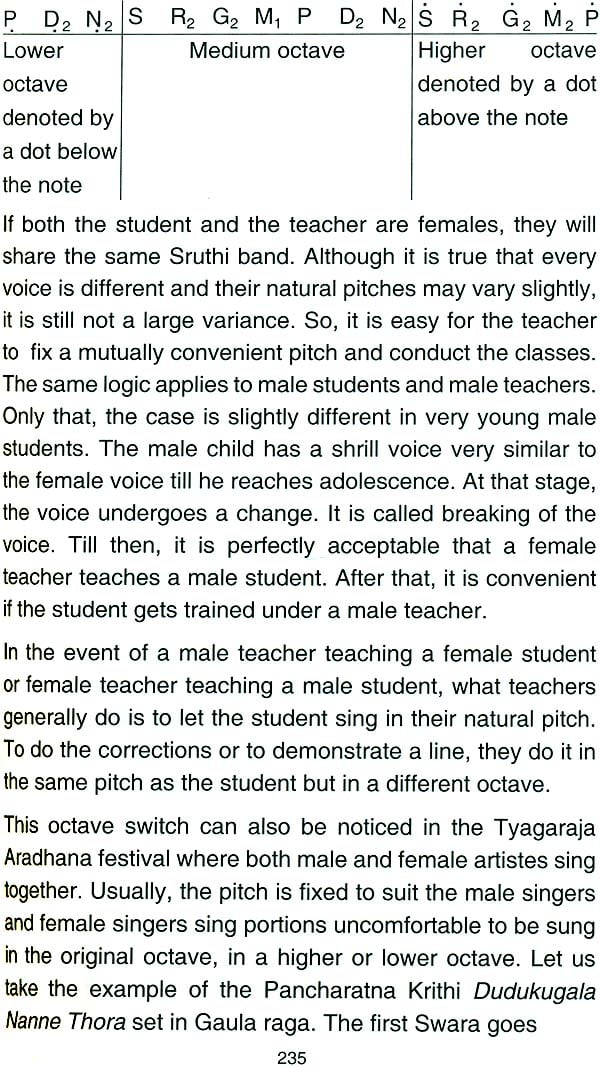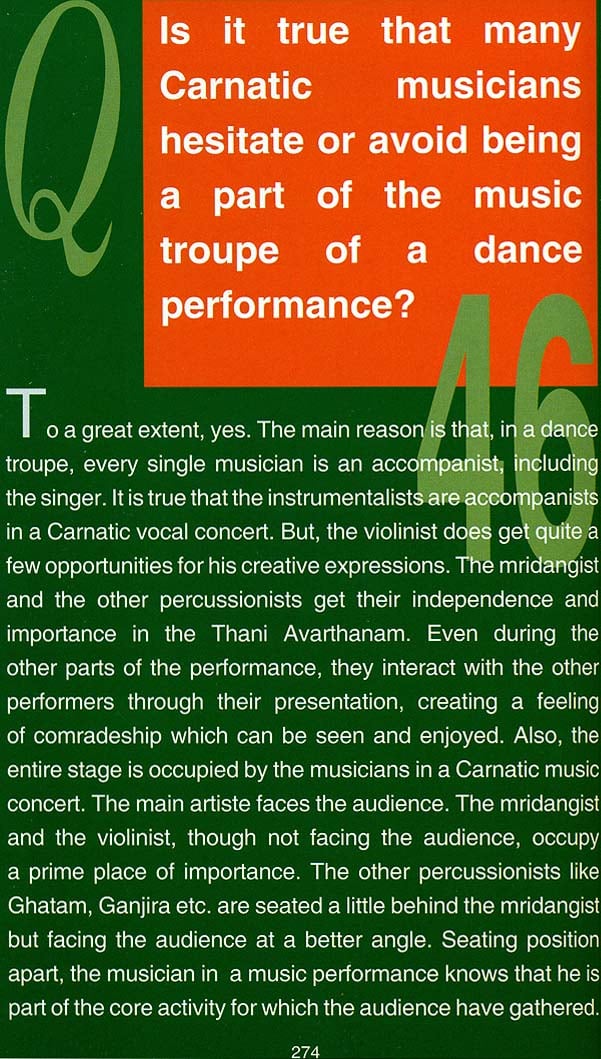
50 Questions and Answers on Carnatic Music
Book Specification
| Item Code: | NAL722 |
| Author: | Vidya Bhavani Suresh |
| Publisher: | A Skanda Publication, Chennai |
| Language: | English |
| Edition: | 2013 |
| Pages: | 304 (Throughout Color Illustrations) |
| Cover: | Paperback |
| Other Details | 8.5 inch x 5.5 inch |
| Weight | 640 gm |
Book Description
Carnatic music is a subject which fascinates a lot of people. Many take great pleasure in knowing the names of various ragas. It is interesting to note that many raga names are fondly used to name children in the family. It is highly musical to hear children bearing names like Sahana, Hamsadhwani, Lathangi, Shanmugapriya, Sriranjani etc. Many people like to hum popular Carnatic music compositions like Vatapi Ganapathim Bhajeham, in the raga Hamsadhwani, Mahaganapathim Manasa Smarami in raga Natta, Nagumomo Kanaleni in raga Abheri, etc. and derive tremendous pleasure if they are able to reproduce the song fairly correctly.
Skanda's catalogue contains two very detailed books in Carnatic music. One is a dictionary and the other is a detailed tome structured as chapters. These books explore every aspect of the style taking the reader from the basics to very advanced and intricate aspects. With two books already available, why did we feel the need to bring out third book? Precisely because, we felt that we needed a slightly simpler book on the form which addressed the readers' basic curiosity and inclination towards Carnatic music without actually taking them into the realm of techniques and complexities. While the earlier two books have dealt with every complex aspects of Carnatic music in an extremely approachable and user friendly manner, this book makes a very conscious effort to avoid technical term to the maximum extent possible.
Our regular interactions with readers and music enthusiast also threw up some interesting observations. Some doubt that people have, are very much a part of the subject; yet, not necessarily explainable through the thala scheme or the Melakartha chart. One such question which we can quote here as an example is, 'What is the role or significance of the Thani Avarthanam? Why is it that most people leave the hall during this period, or even if present, don't pay much attention to that part of the performance?' Over these years, I have been asked many such questions which I have answered. You could say that this book is an extension of that. We have compiled fifty useful and interesting questions on Carnatic music which will make very interesting and engrossing reading. This format ensures that the reader at no point feels alienated or out-of-sync with the subject. Once a reader completes reading the full book, his understanding and his comfort level in Carnatic music would have gone up by many notches. Very keen readers can also graduate to our other titles 'A Comprehensive Dictionary of Carnatic Music' and 'Treatise on Carnatic Music' for a deeper and technical understanding of the subject.
Many questions listed herein have been contributed by my three children, Mahitha Suresh, Harshitha Suresh and Nipun Suresh, keen students of Carnatic music. It all started quite long ago as their innate curiosity and enthusiasm to know the subject better. Once the theme of this year’s book was decided, I requested them to jot down all the questions that they wished to include in the book. I truly thank them for their inputs and also for religiously reading through every answer and telling me if it was convincing and satisfactory. My husband B.A. Suresh, offered his own unique perspective suggestions and opinions from a listener’s point of view. This greatly broadened my perspective and thereby enriched this tome.
The question and answer format proved to be very successful when we brought out a book on childcare about nine years back. Hence, we are very confident that, this format will be a huge hit with music enthusiasts as well .
All the questions have been listed one after the other in the ‘Contents’ pages with their page numbers to enable easy navigation through the book. The last two pages contain very brief definitions of basic concepts which readers can refer whenever necessary. The notes Sa, Ri, Ga, Ma, Pa, Da, Ni are referred to as S, R, G, M, P, D, N.
’50 Questions and Answers on Carnatic Music’ is just the beginning of this in our Classical arts collection. We truly hope that we will bring out more such books in the future in this style about not just Carnatic music, but other classical dances as well.
| Introduction | 13 | |
| 1 | Why are some compositions very difficult while some are much easier in spite of their being set in the same raga? | 16 |
| 2 | Why are there ragas in Carnatic music? Isthe raga framework a highly technical and complicated arrangement? | 20 |
| 3 | How important are the Arohanam and Avarohanam in the raga structure? What is their exact role? | 24 |
| 4 | Can all ragas be used to compose all types of compositions like Geetham, Varnam, Krithi, etc. or is there any restriction or rule here? | 32 |
| 5 | Is there a limit to the number of notes that can come in an Arohanam or an Avarohanam? | 36 |
| 6 | Why is it that most listeners find vocal concerts in Carnatic music more interesting than instrumental concerts? | 38 |
| 7 | Why are Melakartha ragas split into two groups? | 46 |
| 8 | If endless number of ragas are really possible, how do we identify each of them? | 50 |
| 9 | What is the role or significance of the Thani Avarthanam? Why is it that most people leave the hall during this period, or even if present, don't pay much attention to that part of the performance? | 54 |
| 10 | What is the role and significance of the Thambura? Which is better - the electronic or the manual? | 58 |
| 11 | What are the factors on which the enjoyment of a concert depends? | 60 |
| 12 | Why is it that identifying a raga when it is sung as a Carnatic music composition, much easier than hearing it as a film song? | 68 |
| 13 | Can a taste in Carnatic music be acquired or is it inborn? | 72 |
| 14 | Raga-singing is a spot-created portion of a concert. Can it be preplanned? Or rather, does raga-singing fall within any specific structure? | 76 |
| 15 | Can the raga-singing part of Carnatic music be learnt from a Guru? | 78 |
| 16 | Is it true that Carnatic music contains more of compositions in Telugu? If so, what is the reason? | 82 |
| 17 | To what category of music does the music of classical dance styles like Bharatanatyam, Mohiniyattam belong? | 90 |
| 18 | If a composition is used in both Carnatic music concerts and in Bharatanatyam performances, is it presented the same way or is there any difference between the two versions? | 100 |
| 19 | Is voice quality an important aspect for being a successful singer? Is it true that voice quality is more important in film music? | 108 |
| 20 | Why are some performers crowd-pullers and some not? | 112 |
| 21 | What is the exact function of the raga element and thala element in a song? | 118 |
| 22 | All ragas are born out of the same basic set of seven notes. Then, is it possible that every raga is really distinct and different? | 122 |
| 23 | Can a song be sung with a different thala rather than its original one? | 130 |
| 24 | What are compositions that are available as a series? Are they to be presented only as a group or can they be presented as independent compositions? | 142 |
| 25 | Why are ragas like Thodi, Shankarabharanam, etc. called Melakartha ragas? Why are Hamsadhvani, Anandabhairavi, etc. called Janya ragas? | 148 |
| 26 | What is the exact variation among the various genres of compositions like Javali, Padam, Krithi, Varnam etc.? | 156 |
| 27 | Is there any criteria for selection of a song to be presented as the main piece of a concert? Are all compositions suitable for this? | 168 |
| 28 | Are announcements of the item, raga and thala useful in a Carnatic music concert? | 174 |
| 29 | Is it true that the same raga is available in different streams of music? | 182 |
| 30 | What is the role of a Carnatic music concert at a wedding reception? | 184 |
| 31 | What is the apt duration for a Carnatic music concert? | 188 |
| 32 | Is similarity in raga names indicative of similarity in structure? | 194 |
| 33 | Can we spot the exact variant of a note just as we hear a raga or song being sung? | 216 |
| 34 | Is it true that certain ragas can influence climatic changes? | 220 |
| 35 | What is Music Therapy? Is it true that music has healing properties? | 230 |
| 36 | Is there any technical necessity that male teachers teach male students and female teachers teach female students? | 234 |
| 37 | Is the distinction between any two Janya ragas more pronounced than any two Melakarta ragas? | 238 |
| 38 | Is there a raga for every possible combination of notes? Can there be endless number of ragas? | 242 |
| 39 | Do Ghamakas make a raga more beautiful? | 244 |
| 40 | Why is it that when Varnams are taught, students are first asked to learn the Swara phrases of the entire item and then its lyrics while in Kritis, the Kriti is taught in the lyrics form itself? | 248 |
| 41 | Are Chapu thai as in any way less important or inferior to the other thalas? | 256 |
| 42 | In what way is duet singing different from solo singing? | 258 |
| 43 | What is the role of reviews in the Carnatic music scene? How effective are they? | 262 |
| 44 | In what way is the item Ragam, Thanam, Pallavi different from singing any regular Kriti as the main piece? | 266 |
| 45 | Why is it that many people take pride in calling themselves connoisseurs of Carnatic music? Is it a qualification in itself? | 270 |
| 46 | Is it true that many Carnatic musicians hesitate or avoid being a part of the music troupe of a dance performance? | 274 |
| 47 | Why do mridangists make the rava-paste (sooji paste) and affix it on the instrument just before a concert? | 280 |
| 48 | Is a Carnatic music concert a team work? In other words, is there any level of pre- planning or pre-rehearsing among the team members? | 286 |
| 49 | What is the exact level of practice necessary after becoming a performing artiste? | 282 |
| 50 | In today's cyber age, where there is a lot of talk and buzz about learning Carnatic music through the internet, are the traditional learning methods becoming obsolete? | 298 |
| Brief definition of terms | 302 |
